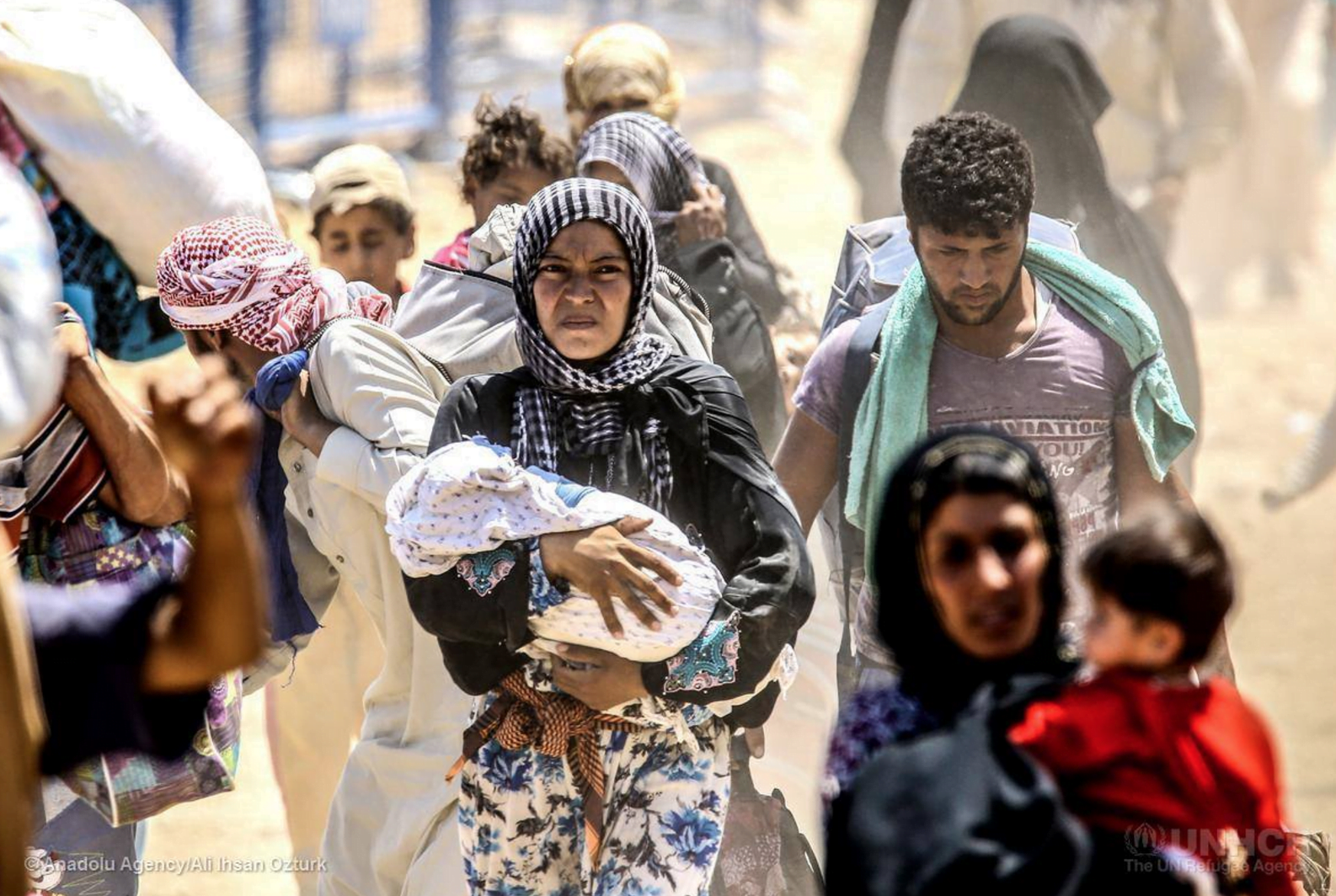The current refugee crisis arising from civil upheaval in the Middle East and Africa has caused over 4.1 million people to flee Syria alone since 2011. While the majority of asylum seekers in the region initially flee to neighboring countries (more than a quarter of the population resident in Lebanon is Syrian) most aspire to establish refugee status in Europe.
Despite the European Union’s Dublin Treaty, which states that an asylum seeker must apply for asylum in their country of first entry into the union, many are moving north to places that promise higher economic chances. At the top of their list: Germany, which expects to receive 1.5 million asylum seekers in 2015. This recent influx has resulted in diverse reactions in the European political and social spheres. Photographs of fences erected around Hungary and Austria’s border to Slovenia, and Hungarian camerawoman tripping a man fleeing with his son evidence the exclusionary sentiment present on the continent, supported by growing right wing movements.
And yet some countries and politicians have insisted that they can and will accommodate large numbers of refugees.
What makes a country a ‘good’ country for refugee resettlement, fairly assuming their burden in the global community? Here are four countries on three continents that both quantitatively and qualitatively stand out.
With as many refugees arriving in Europe last month than all of last year, this question of where they can and should resettle is all the more urgent.
1) Germany. The huge migration of refugees seeking asylum in Germany in autumn of 2015 has dominated the news for months. Many believe that this sudden influx arose from rumors spread through co-nationals living in Germany that refugees would encounter both physical and economic security, if they made it to this EU leader. Angela Merkel made headlines with her strong position in favor of processing the huge numbers of refugees. “If Europe fails on the question of refugees, then it won’t be the Europe we wished for.” German Interior Minister Thomas de Maizere characterized the influx as “challenging but not overwhelming.” Germany now expects 1.5 million asylum applications this year alone, the highest in Europe. Last year, Germany accepted 40,000 applications, granting asylum to more individuals than any other European country.
2) Sweden. It is important to discern between countries that process and temporarily provide residence to, and those that actually recognize large numbers of asylum seekers (the above case of Germany does both). When considering the total accepted asylum applications in relation to the overall country population, Sweden tops the charts. Sweden has historically accepted refugees from across the globe, beginning with those fleeing authoritarian rule in Chile during the 1970s. In 2013, the Swedish Migration Board granted Syrian refugees permanent residence in Sweden. In Sweden, the rights granted to refugees on account of this permanent status—immediate capacity to work, choosing place of residence and family reunification—are notable and vital for quality of life.
3) The United States. Influenced by its political and military position regarding conflict in Syria, the U.S. has not favorably made the news on the current refugee crisis, offering to resettle only approximately 10,000 Syrian refugees. Yet looking holistically at its system reveals a sunnier picture of U.S. refugee policy. The United States permanently resettles more refugees than any other country in the world, historically taking half of all applications received via the UN Refugee Agency. Last year, this amounted to about 70,000 refugees worldwide who, for the most part, were living in limbo in the country to which they fled. The USA may not be a viable option for Syrian refugees, but large numbers of refugees from elsewhere are routinely resettled in the USA.
4) Brazil. Comprehensively evaluating policies though a survey rating refugees’ actual access to the 1951 Convention Relating to the Status of Refugees, as well as national human rights legislation, the World Refugee Survey 2013 grades countries based on refoulement/physical protection; detention/access to courts; freedom of movement and residence; and right to earn a livelihood. The only country reciving an “A” grade in all categories is Brazil. Additionally, the reciprocal entry policy between Brazil and numerous African countries allows asylum seekers to circumvent dangerous routes and smuggling often used by those attempting to reach the United States or Europe. Brazil, whose little known refugee system may not excel quantitatively (although asylum requests have exploded from a mere 560 in 2010 to 12,000 in 2014), excels qualitatively in its refugee resettlement policies.
